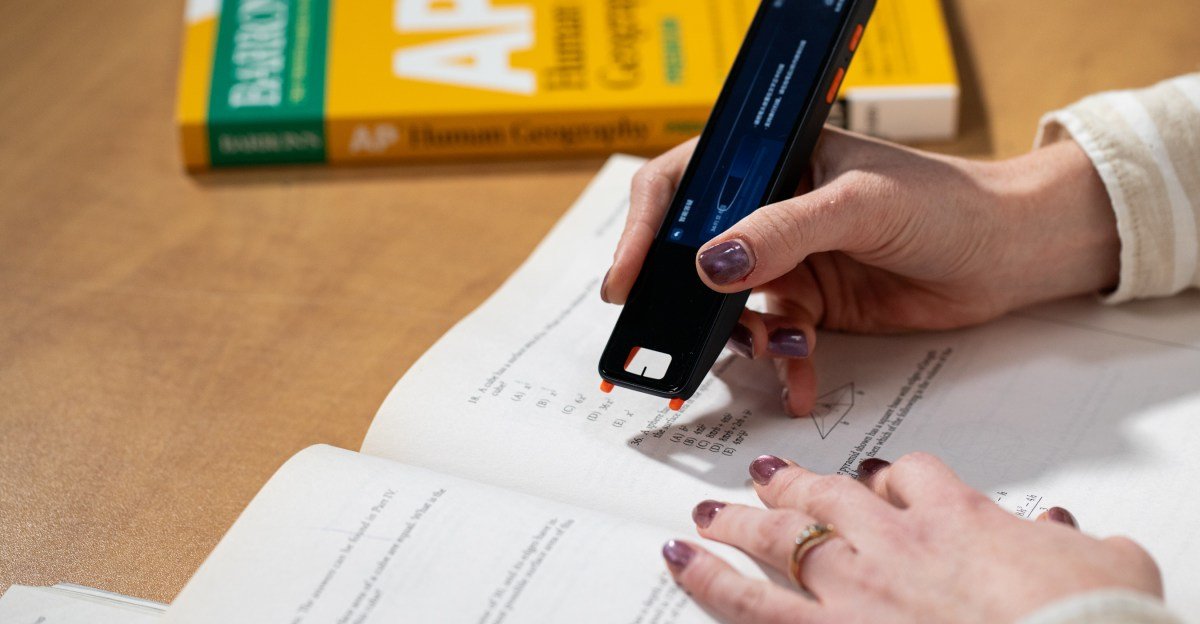A college student recently told me about the latest technology designed to help students cheat — and it wasn’t ChatGPT. It was a real, physical gadget that was marketed in YouTube ads as a solution to physical, hardcopy tests, which is back in vogue now as AI destroys higher education like a tornado. (An example is AI agents, which are invincible cheating machines for online assignments.)
But if questions printed on a physical sheet of paper seem like the calm eye of a storm, think again, because when there’s a will, there’s a way – or a gadget. In this case, a small wand-like device that resembles a TV remote with a screen and a few buttons on the side.
In practice, the gadget is a text scanner. It “reads” the letters on the page using a small camera mounted between two prongs protruding at one end, which turned on a light when pressed against the page. The on-device computer processes the words and uses AI or perhaps the Internet to provide answers.
YouTube shorts featuring the devices with names like “AI Smart Pen” or “ChatGPT Pen” are appearing on college students’ video feeds. These POV-style videos show “students” taking a “pen” out of their pocket and wielding it on a classroom desk during an exam. The video has been viewed millions of times. “I needed to get back to high school,” reads the text in a video showing an #AI #pen #gadget that scans a question asking for the name of the first president of the United States. (Answer: George Washington, according to #AI #Pen #Gadget.)

The ads show it like this: A swipe of the gadget over a question on a printed test answers said question.
So, I tried one of the nearly 90 devices on Amazon that is called some version of an “AI scanner pen” – “Scan Sense Pen, AI Smart Scanner Pen” for $68.99. It promised me “quick AI answers for math, history and more,” in addition to offline translation of over 60 languages, a camera, Bluetooth connection, and access to music and file storage. I got it in black color.
I also found that it doesn’t work.
It turned on and lit up pages from various test prep study books I had checked out from the public library. When moving on to a question, the camera detected the words correctly some of the time.
But the answers it gave me were nonsense. I tried it on algebra, science, and history questions – and none of the answers made sense.
At first, I wondered if I hadn’t selected the right setting. The menu of the pen we purchased was in Chinese, which made it difficult for me to navigate the homescreen. I put pictures of the screens into language translation apps to find out what each button does. One was for language translation, another for essay help, and even more for terminology help or voice recording.




The setting I wanted, and which I was already testing, is called Q&A and its purpose is to answer scanned questions. Even when the device successfully scans words, which is not often, it presents ridiculously incorrect options.
For example, when I asked the question “What is the layer that lies immediately beneath the Earth’s crust?” When I scanned the world, he told me that “there are over five hundred known active volcanoes and thousands of extinct volcanoes in the world.” (Answer: Mantle. Fact Check: According to the Smithsonian Institution’s Global Volcanism Program, the number of “active” volcanoes depends on the time frame. There are 525 volcanoes that have been confirmed to have erupted since the year 1800.)
The second problem was its size. It is so heavy that it cannot attract attention. Imagine a quiet classroom, students sitting at desks a few feet apart, the teacher peering into the room from their desk at the front. Surely nearby colleagues or proctors walking in the rows would have seen a 6-by-1.25-inch stick burning a student’s exam paper?
Although it failed as an answering machine, the device could theoretically help translate text between languages. I got six languages: Chinese, Japanese, Korean, Cantonese, Traditional Chinese, or English. A quick test from English to Chinese and back to English via a translation app was successful.
College students told me a very simple and inexpensive way to cheat on hard-copy tests: Take a picture of the test question on your phone and upload it to ChatGPT. This is relatively easy to do in large lecture halls, he assured me, even with a proctor moving around the room. Students told me that they see their peers doing this at the beginning of exams. Later, after ChatGPT has processed the replies, those partners take a quick look at their phones under the desk. Or they watch during bathroom breaks in between tests.
All that is to say: cheating has never been easier, maybe not with this device.
